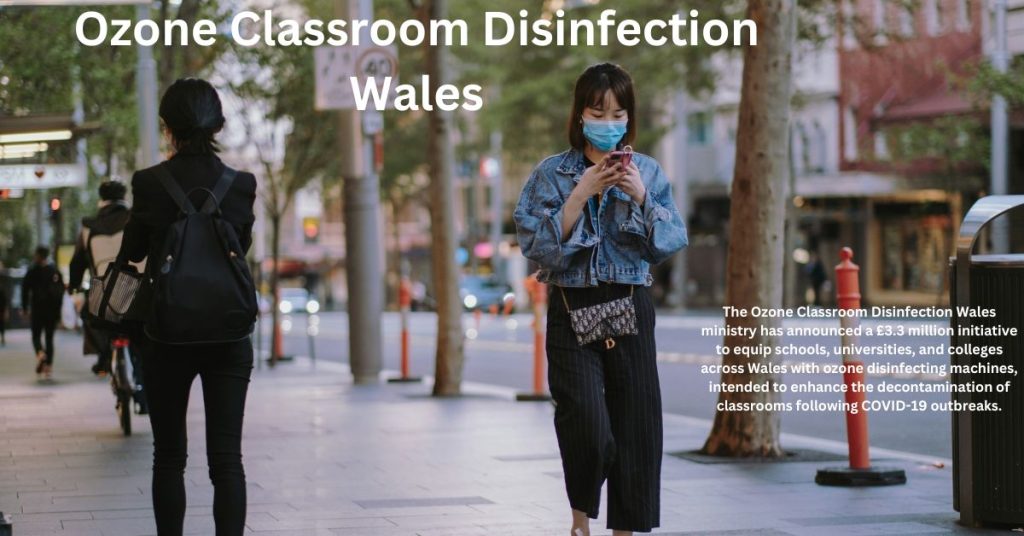Safeguarding Student Health with Ozone Classroom Disinfection Wales
The Ozone Classroom Disinfection Wales ministry has announced a £3.3 million initiative to equip schools, universities, and colleges across Wales with ozone disinfecting machines, intended to enhance the decontamination of classrooms following COVID-19 outbreaks. This move is part of a broader £5.9 million effort aimed at improving air quality in educational settings. However, this substantial investment has triggered concerns about the safety and efficacy of using ozone—a toxic chemical—as a disinfectant in environments frequented by students and staff.
The Scheme and Its Objectives
On Monday, the Welsh government revealed that it will supply approximately 1,800 ozone disinfecting machines to educational institutions throughout Ozone Classroom Disinfection Wales. Developed at Swansea University, these machines are designed to convert oxygen in a room into ozone, a chemical effective in neutralizing COVID-19 along with other viruses and bacteria. The process involves creating ozone, which is highly toxic, to disinfect the space. After disinfection, the machines convert the ozone back into oxygen before the room is reoccupied.

The initiative aims to bolster the safety of educational environments by reducing the risk of COVID-19 transmission and improving overall air quality. Ozone Classroom Disinfection Wales By focusing on post-outbreak disinfection, the Welsh government hopes to ensure that learning environments remain as safe as possible for students and staff. The £3.3 million allocated for the machines forms a part of a more extensive £5.9 million plan, which also includes funding for additional measures to enhance air quality in classrooms and lecture halls.
Technical Details and Operational Safety
Each ozone disinfecting machine, approximately the size of a suitcase, operates by generating ozone, which is then dispersed throughout the room to eliminate pathogens. Ozone Classroom Disinfection Wales Due to the toxic nature of ozone, the rooms must be evacuated while the machine is in use. Dr. Chedly Tizaoui, a member of the design team from Swansea University, emphasized the importance of adhering to strict safety protocols. According to Dr. Tizaoui, the room must be completely vacated during the disinfection process, including pets and animals, to prevent exposure to ozone.
He likened the ozone application process to the use of chlorine, noting that high concentrations of either chemical are hazardous to human health. Ozone Classroom Disinfection Wales The machines are programmed to allow sufficient time for cleaners and other personnel to exit the room before operation begins. Once the disinfection cycle is complete, the machine will signal that it is safe to re-enter the space. Dr. Tizaoui assured that, if operated according to guidelines, the machines are safe, drawing a comparison to the safety precautions necessary for operating a car.
Safety Concerns and Public Reactions
Despite the technical assurances provided by Dr. Tizaoui, the use of ozone in educational settings has raised significant concerns among health professionals and campaigners. Plaid Cymru, a political Ozone Classroom Disinfection Wales, has questioned the decision to deploy a potentially harmful substance in schools, particularly when safer alternatives are available.
Dr. Eilir Hughes, a general practitioner and member of the Fresh Air Wales campaign, voiced skepticism about the scheme's safety and efficacy. He argued that the introduction of ozone—a known toxic substance—into schools could pose risks, particularly when interacting with other Ozone Classroom Disinfection Wales chemicals or materials present in classrooms, such as soft furnishings. Dr. Hughes advocated for improved ventilation as a safer and more effective measure for mitigating COVID-19 transmission in educational settings. He suggested that natural ventilation could reduce transmission by up to 70%, making it a preferable option compared to the introduction of expensive and potentially hazardous technology.
In an online article published in Nation Cymru, Dr. Hughes criticized the initiative as counterintuitive. He contended that the use of ozone, despite its Ozone Classroom Disinfection Wales effectiveness in killing viruses, introduces additional risks to human health. He argued that safer, more straightforward methods such as enhancing ventilation should be prioritized over deploying untested and costly technology.
Political and Public Scrutiny
The initiative has not only faced scrutiny from health professionals but also from political figures. Siân Gwenllian, Plaid Cymru’s education spokesperson, expressed concern about the controversial nature of ozone disinfecting machines. She called for assurances from the Ozone Classroom Disinfection Wales government that the technology is a safe and effective option before its widespread deployment. The controversy underscores the need for a careful balance between innovative measures to combat COVID-19 and the potential risks associated with their implementation.
A Welsh government spokesperson defended the decision, explaining that the machines are intended solely for disinfecting empty spaces following confirmed COVID-19 outbreaks. They emphasized that the machines are not intended for continuous air purification in occupied areas. Additionally, the Welsh government plans to provide Ozone Classroom Disinfection Wales CO2 sensors to further enhance ventilation in schools, a measure that complements the ozone disinfecting machines by addressing air quality in occupied spaces.
The £3.3 million investment in ozone disinfecting machines represents a significant effort by the Welsh government to enhance the safety and hygiene of educational environments in the wake of the COVID-19 pandemic. While the initiative aims to reduce the risk of virus transmission and improve air quality, it has sparked a robust debate about the safety of using Ozone Classroom Disinfection Wales. The concerns raised by health professionals, political figures, and campaigners highlight the need for a comprehensive evaluation of both the benefits and potential risks associated with this technology.
As Wales moves forward with the implementation of this scheme, it will be crucial for the Welsh government to address these concerns transparently and ensure that appropriate safety measures are in place. The ongoing discourse surrounding the use of Ozone Classroom Disinfection Wales underscores the broader challenge of balancing innovative approaches with safety and efficacy in public health initiatives.
Comments (0)